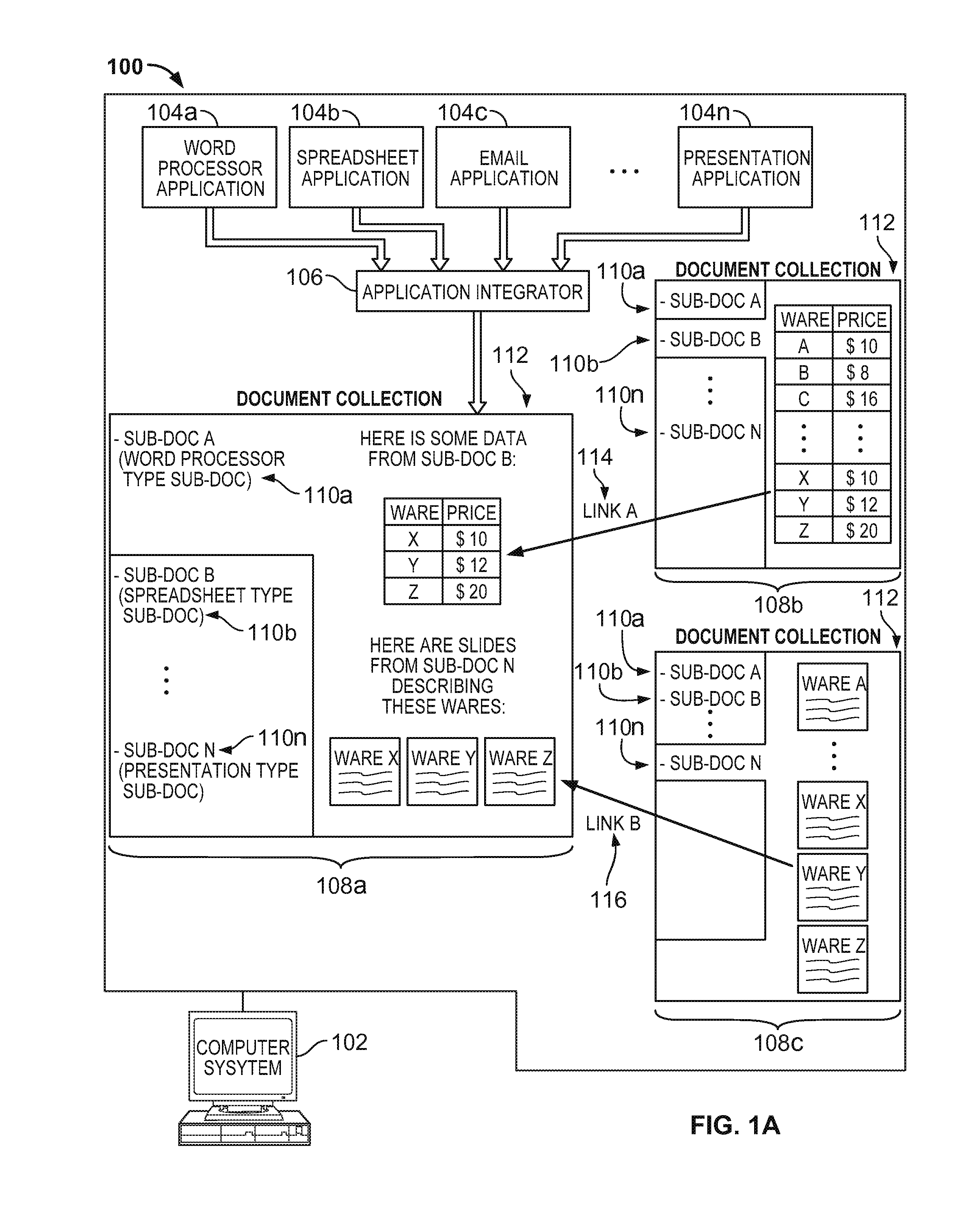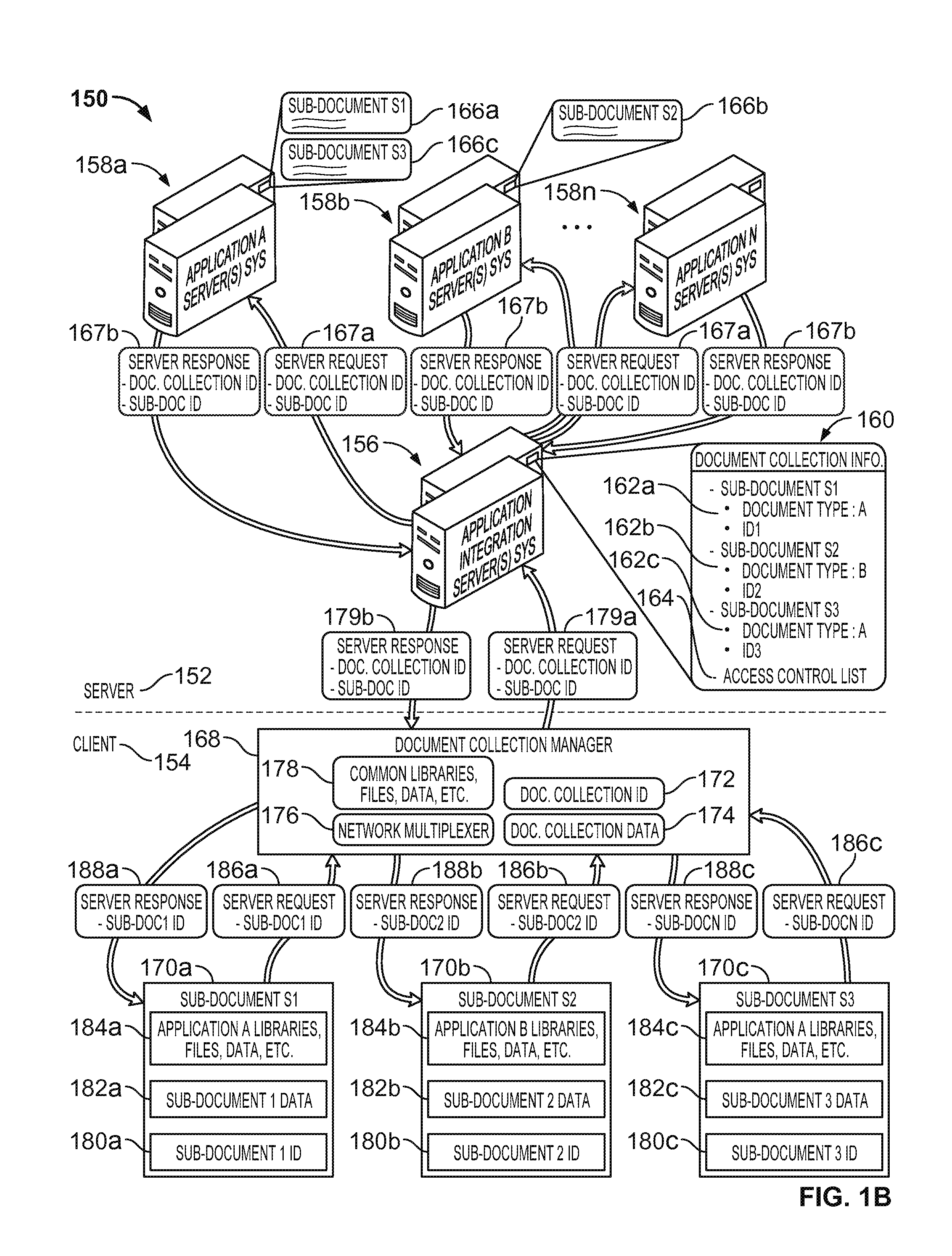[0006]Document collections can be provided using non-address identifiers for the sub-documents. For example, an address-based identifier for a document, such as a file path (e.g., / example / file.txt), can “break” if some aspect of the address is changed (e.g.,
directory renamed) or the document is moved to a different location. Non-address identifiers, such as a unique
document identifier maintained in a data repository, can be used in document collections to provide robust connections between sub-documents and the document collection. A non-address identifier for a sub-document can be used as part of a
uniform resource locator (URL) to request access to the sub-document (e.g., www.example-domain.com?sub-document=[non-address identifier]). In some implementations, a sub-document that is part of a document collection may lose some of its independence and, as a result, may not be individually accessible. Instead, a request for a sub-document may cause the document collection, of which the sub-document is a part, to be returned.
[0011]The details of one or more embodiments are set forth in the accompanying drawings and the description below. Various advantages can be realized with certain implementations, such as providing users with the ability to logically group sub-documents of various document types together in a document collection. Document collections can make sharing (e.g., emailing, providing network-based access to, etc.) related documents easier for users—by sharing a single document collection, each of the sub-documents contained in the document collection can also be shared. By providing document collections “in the cloud,” a user can share a document collection with another user without concern for whether the other user has appropriate applications installed on his / her computing device, and the documents can be accessed from a variety of internet-connected devices. Using non-address identifiers in a document collection, sub-documents can be robustly included in a document collection.
[0012]Document collections can provide a structure that inherently encourages users to logically organize sub-documents as part of document collection. Such organization can be particularly useful with cloud-based computing, which may provide users less autonomy to organize documents on a
server system. Additionally, users can readily provide organization associated with a document collection to other users by simply sharing a document collection, which can save other users the time it would otherwise take to piece sub-documents together.
[0013]Document collections can be accessed over a network (e.g.,
the Internet, a
local area network, etc.) such that an owner of a document collection can essentially have
a site (e.g., a website) that includes the content of the document collection. Using document collections, site creation and management can be simplified for a user. Conventionally, site creation involves a user establishing
a site (e.g., registering
a domain name and reserving space on an associated hosting server) and then adding content to the site (e.g., uploading web accessible files to the hosting server). Instead, a document collection can be transitioned into
a site such that the site is populated with content from the document collection without the user having to go through the trouble of creating a site first.
[0014]Operations between sub-documents (e.g., copy and paste) that are part of a document collection provided in the cloud can be simplified for users. For example, when
copying and pasting between documents that are provided in the cloud but not as part of a document collection, a user can experience difficulty transferring data and various data attributes (e.g., data
typing, data formatting) from a first document to a second document as part of the copy and past operations. However, with a document collection, various entities on the
client and / or server-side (e.g., application
integrator, document collection manager, sub-document modules, etc.) can coordinate
copying and pasting between sub-documents such that data, and it attributes, are properly transferred between the sub-documents.
[0015]Document collections can provide additional features that are shared across sub-documents. For example, documents provided in the cloud can have associated chat (e.g.,
instant messaging) logs. Instead of having separate chat logs associated with each sub-document, a single chat log can be maintained for the entire document collection such that, if a user is chatting while accessing a first sub-document and then switches to accessing a second sub-document, then the same chat can continue with the second sub-document. As another example, an
undo / redo stack and information regarding revisions can be shared for sub-documents of a document collection, instead of using individual
undo / redo stacks and individual revision information for each sub-document. This can permit users to more easily track changes over time to the document collection as a whole. In a further example, permissions (and
access control lists) can be associated with a document collection and shared across sub-documents that are part of the document collection. This can permit simplified management of permissions associated with a document collection and its sub-documents.
 Login to View More
Login to View More  Login to View More
Login to View More 


